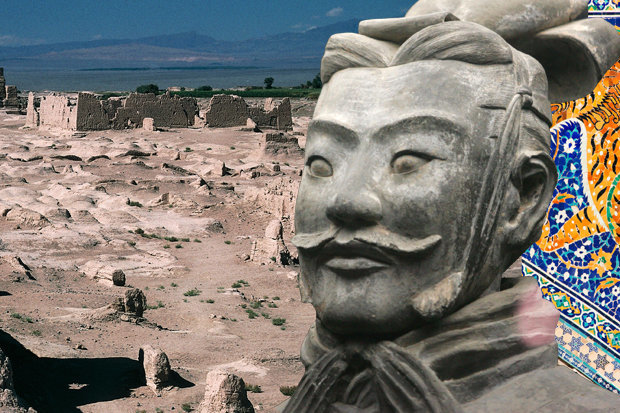Scientists have unearthed the remains of the ruined city which is believed to been used as a base for an ancient army in China.
Experts believe the city was connected to the historic Silk Road – a massive network of trade routes that connected the civilisations of antiquity.
Historians believe the network of roads stretched from Europe, all the way to the Korean Peninsula.
And now the remains of a major city connected to the network have been found in the Koyuk Shahri area of China.
The ruins have been described as “devastated” and remained hidden until high-tech underground sensors were deployed by the boffins.
“Thanks to remote sensing, we can start our excavation of the Protectorate of the Western Regions this year,” said Li Wenying, deputy director of the Xinjiang Cultural Relics and Archaeology Research Institute.
It is believed the city was founded some 2,200 years ago, and was used as a base for the ancient Chinese army in the Tarim Basin.
Analysis revealed a city surrounded by a moat that would have been part of the Western Han Dynasty.
Scientists had earmarked three locations for the city, but have now announced they have pinpointed the ruins.

Nie Yueping, a researcher from the Institute of Remote Sensing and Digital Earth (RADI), said they found the city thanks to an “abnormal ring” detected in the landscape.
She said: “Based on terrain analysis, the moat can be dated back to 2,200 years ago, which conforms to the written records of the Protectorate of the Western Regions.”
The ancient city wall was roughly 230 metres long, scientists said, and was an important hub on the Silk Road.
Archaeologists are now planning to excavate the city site, and are hopeful of getting a major insight into the Silk Road.
Zhu Jianfeng, from RADI, said: “The remote sensing technology can adapt to different landscapes.
“We hope that in the future, more mature technology can be applied to more archaeological work.”
The Silk Road was named as such due to one of its main traded items being silk.
Researchers working on the Protectorate of the Western Regions are supported by the Chinese government.
Last year, boffins uncovered the ruins of a 3,000-year-old Turkish castle underwater – leading watchers to claim it might be Atlantis.












